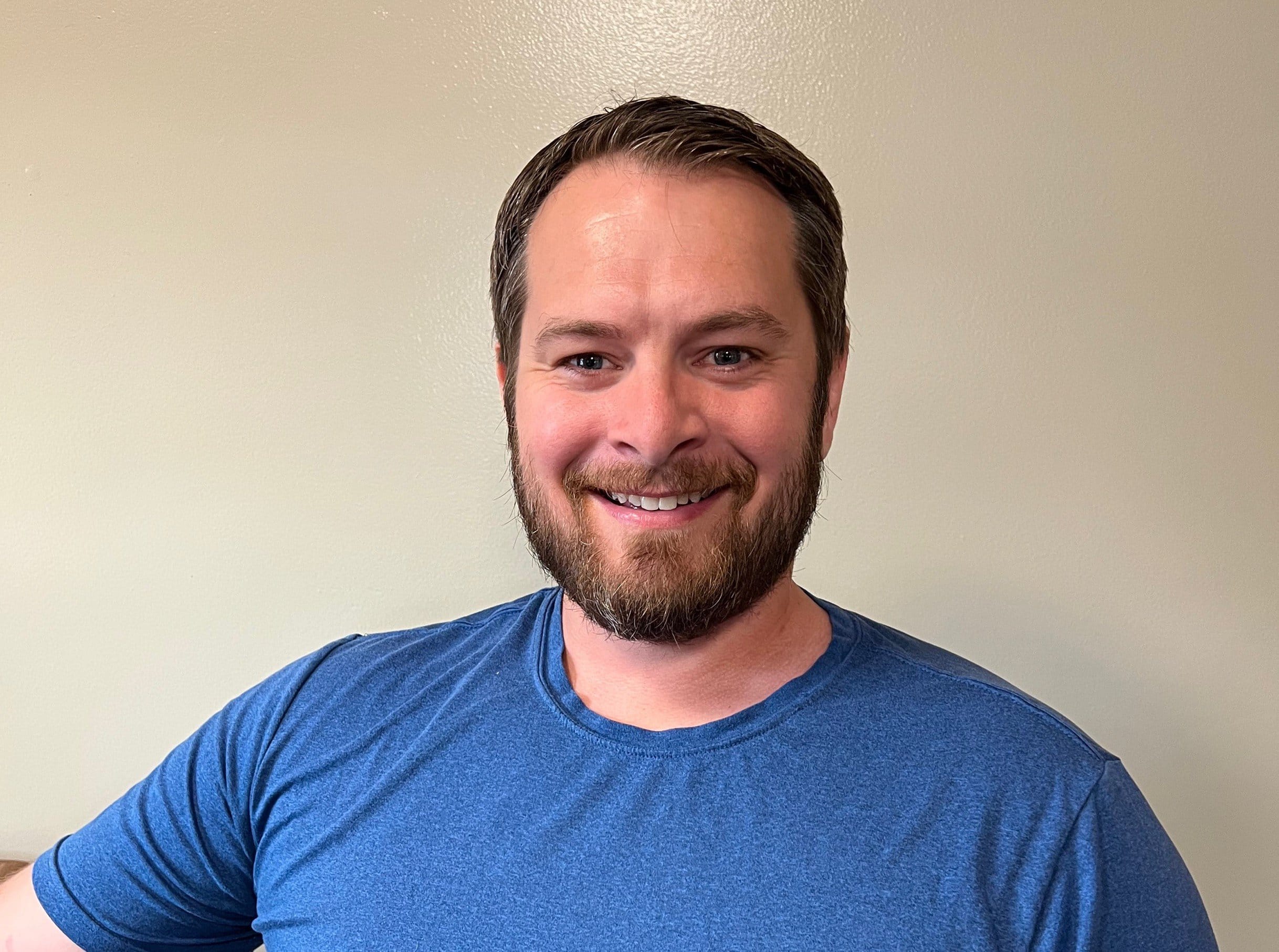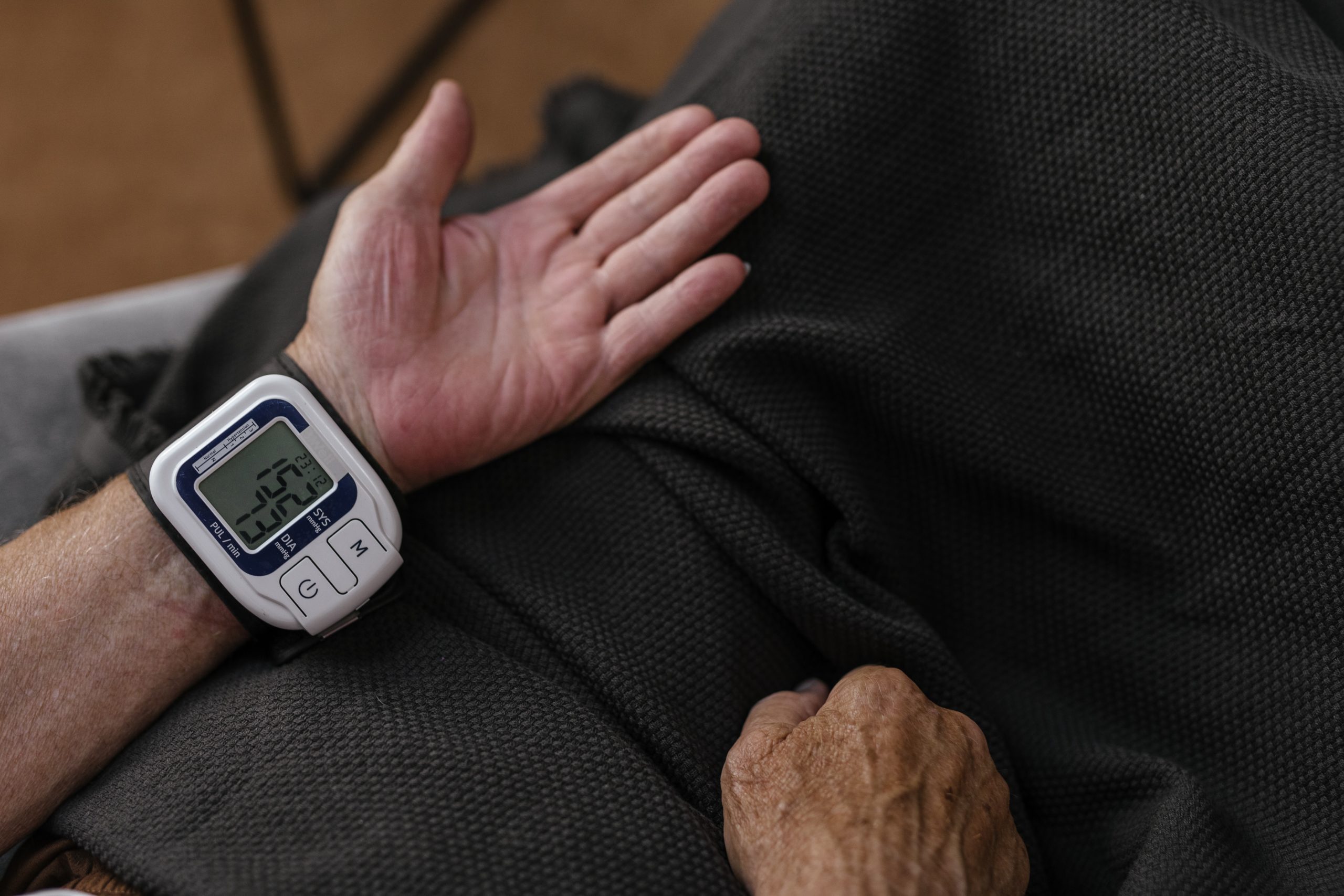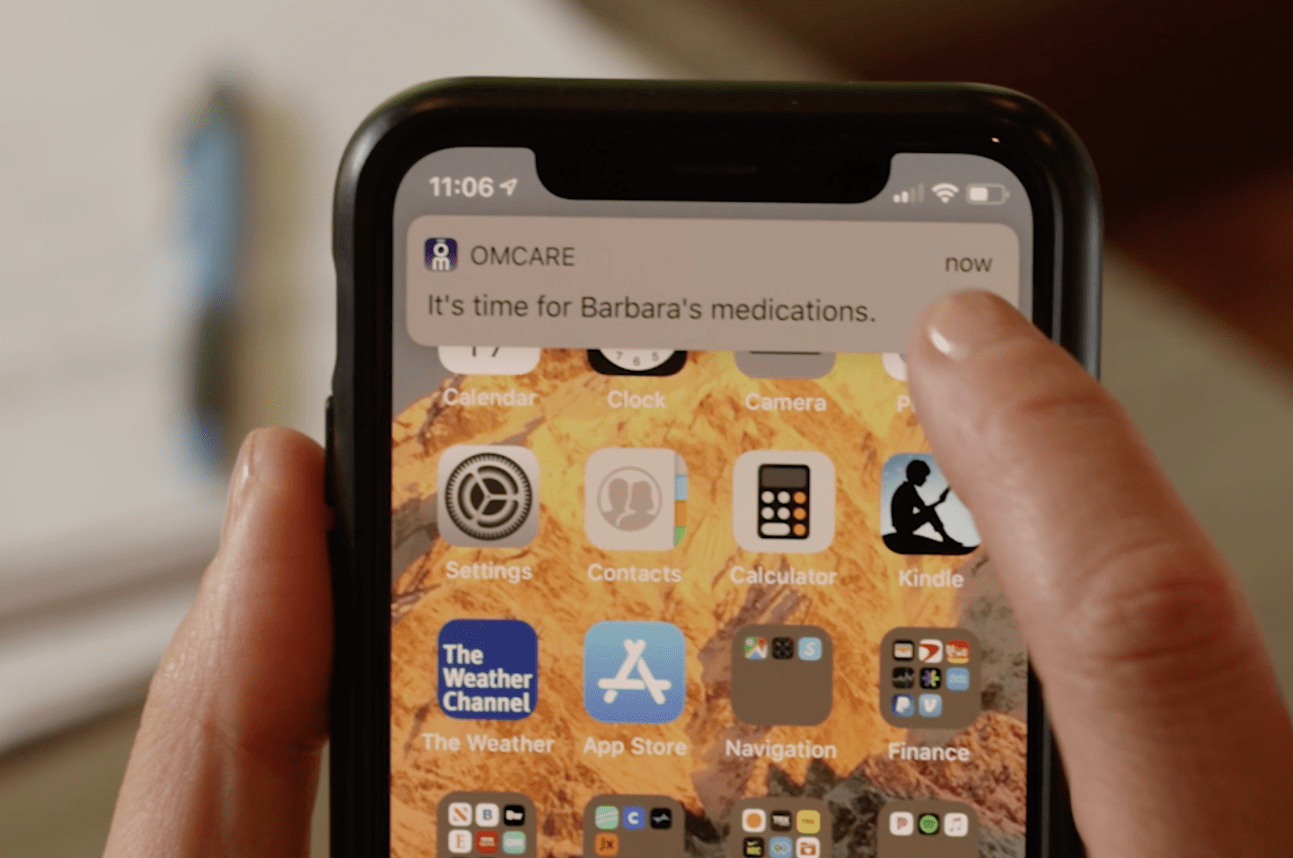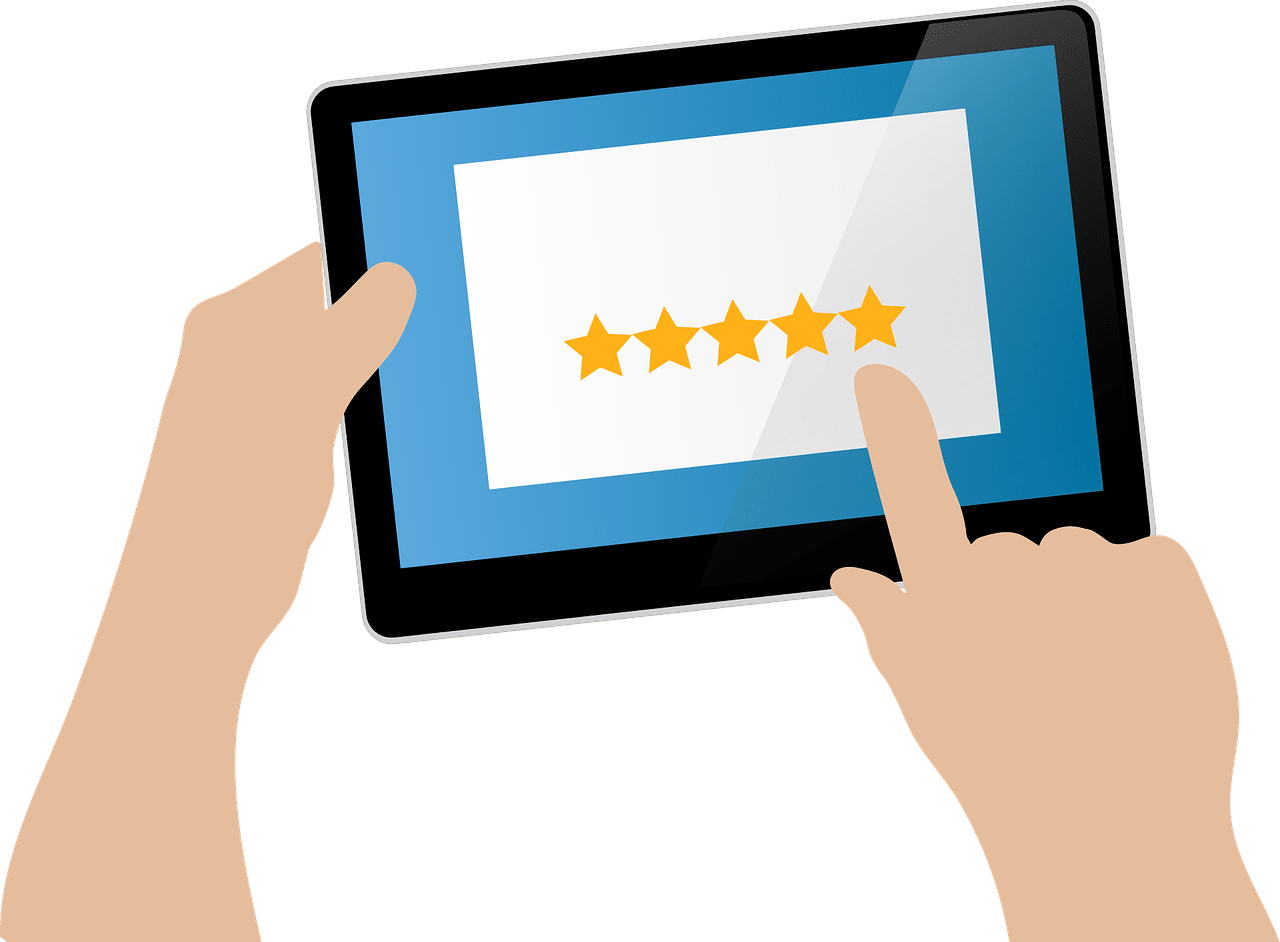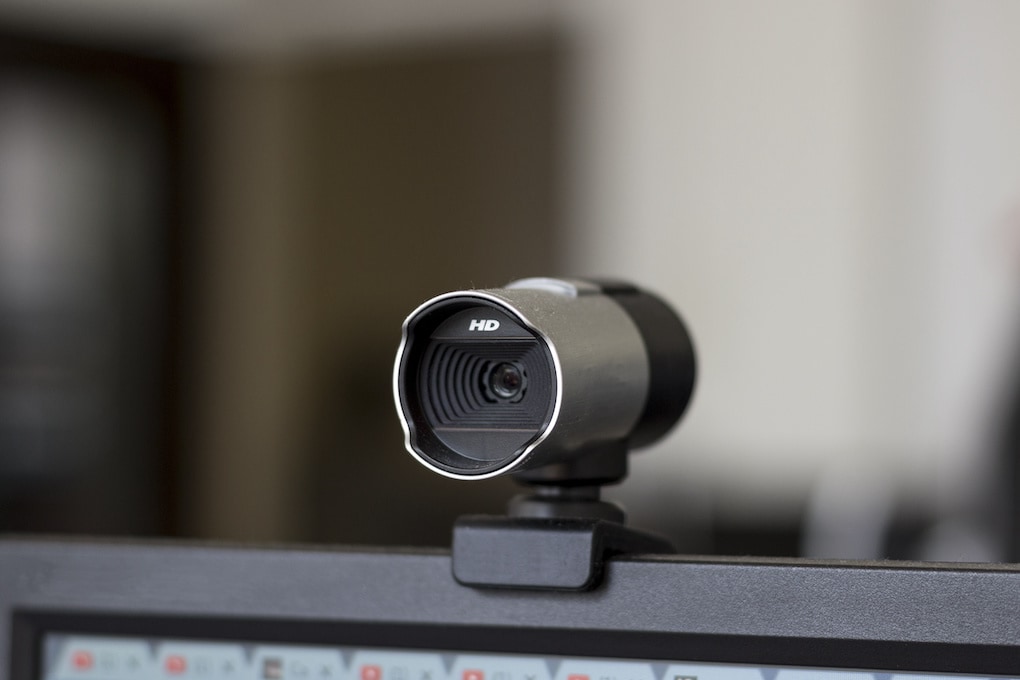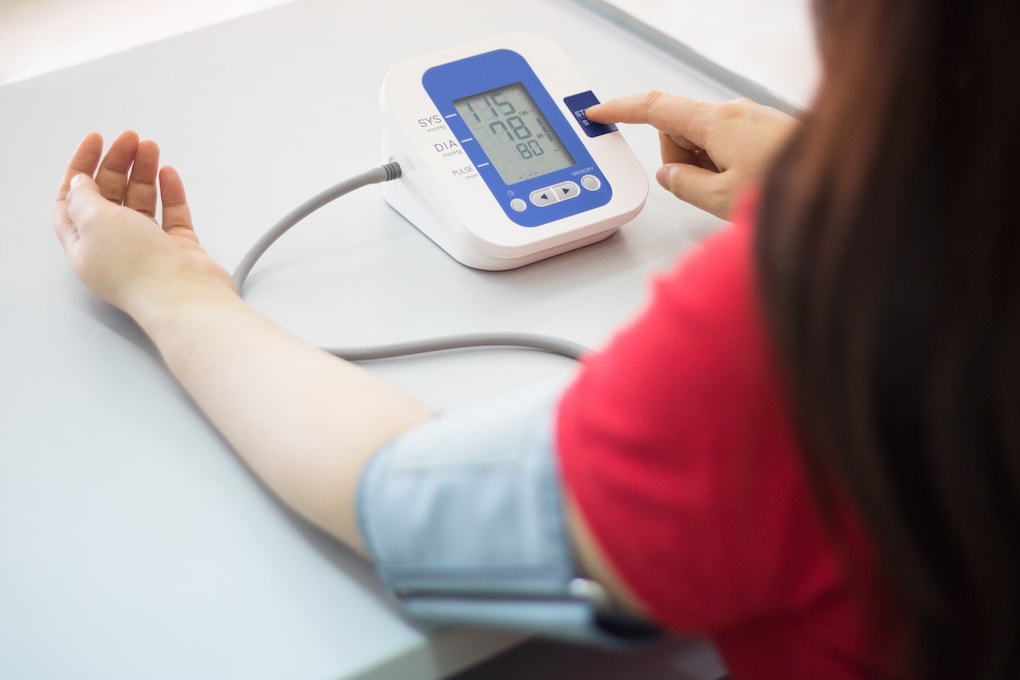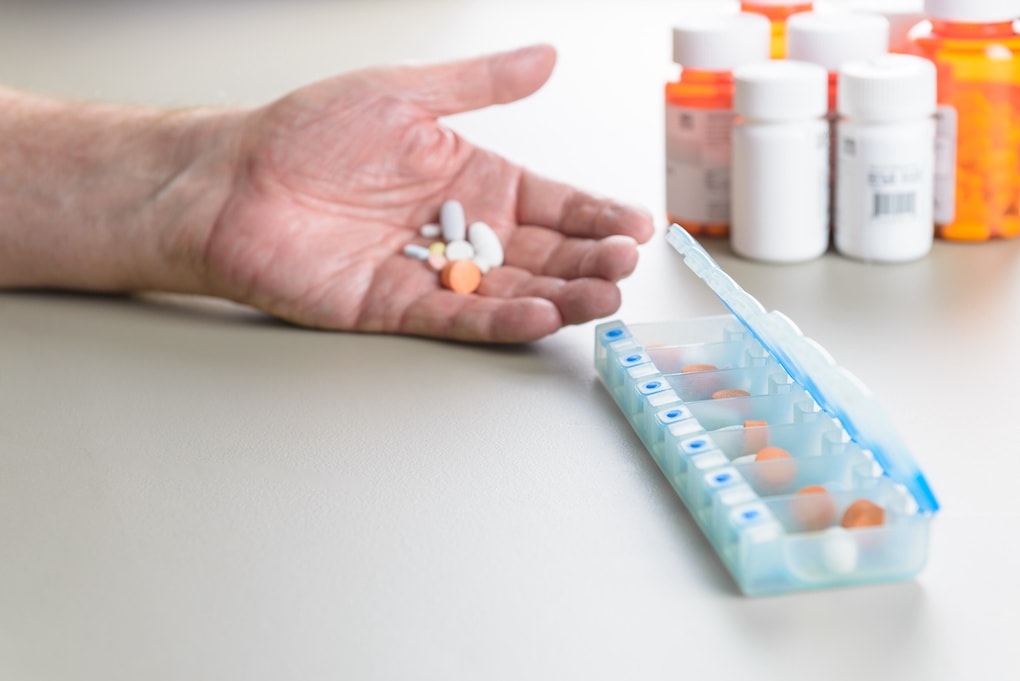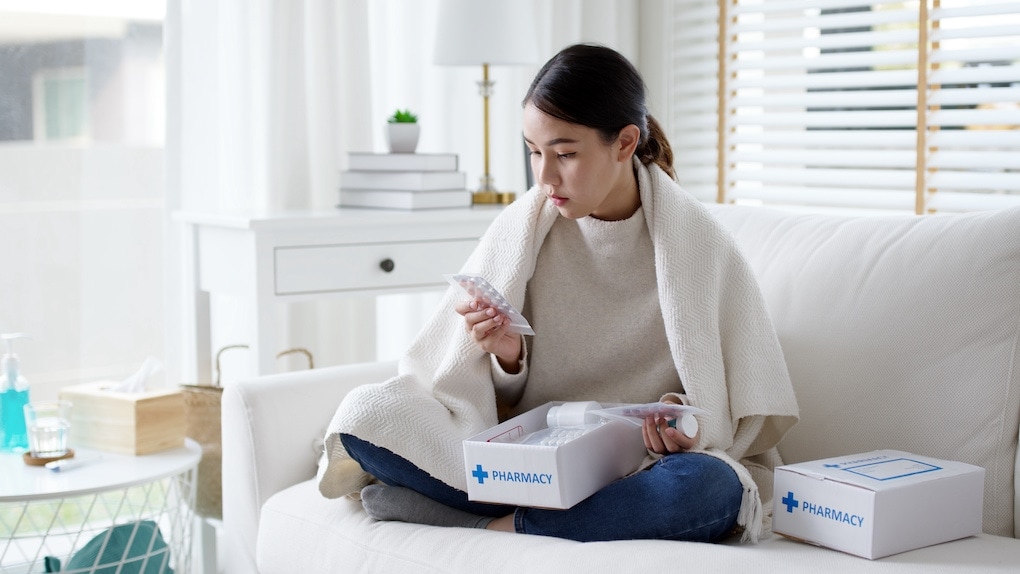Ōmcare appoints Matthew Grose as CTO
June 8, 2022PressPress Releases,News
Ōmcare appoints Matthew Grose as CTO
Grose will lead the development of the Ōmcare Home Health Hub® to bring remote care and medication adherence into the home.
[Minneapolis, June 8, 2022]. Ōmcare announced that Matthew Grose (MG) has been appointed Chief Technology Officer of the company.
An experienced engineering leader, MG spent the last seven years at Optum of UnitedHealth Group, most recently serving as Chief Engineer, VP Software Engineering. Before that, he honed his software skills at LifeTime — The Healthy Way of Life Company.
“Ōmcare has proven core functionality in pilot and is ready to accelerate development of its total solution”, said Lisa Lavin, Chief Executive Officer. “Bringing on a CTO with MG's experience and skills will enable Ōmcare to scale existing technologies while continuing to build innovative solutions for the future.”
While at UnitedHealth Group, MG’s contributions raised the bar of engineering excellence creating efficiency, scale and collaboration across business units. Notable highlights include serving as a Distinguished Engineer, leading the digital provider platform Link used by millions of providers a day, introducing sustainable and secure public cloud adoption and acting as Chief Engineer for the company’s technology platforms powering 40,000 engineers and technologists.
During the pandemic, MG stepped out of his normal duties and focused on increasing accessibility to COVID-19 vaccinations and the successful completion of CARES Act payments by leading rapid speed cloud projects spanning multiple companies, including fast-tracking a year-long cloud scaling plan in 5 weeks. Now, he brings both his software skills and leadership development to Ōmcare.
"I joined Ōmcare for the opportunity to create technology closer to the human experience while playing a pivotal role in the company's future. Ōmcare's purpose is a natural fit to my personal passion of improving quality of life through technology. It is exciting to imagine where home health care will be in 5, 10, 20 years and I'm honored to be playing a part here with Ōmcare. Let’s improve care in the home!” said MG.
Ōmcare is currently in final stages of pilot and expected to be commercial in late 2022.
About Ōmcare
Ōmcare is a digital health company pioneering a customizable home health technology platform that extends the reach of caregivers and enables one-touch access to telehealth services, aggregated remote patient monitoring and medication dispensing with visual confirmation of medication adherence.
Remote patient monitoring for chronic conditions
May 18, 2022Age Tech,Senior CareBlog
Gone are the days when patients needed to be monitored in-person. New technology gives patients the ability to live independently, while monitoring their chronic conditions from their own home. It also effectively lowers the cost of healthcare for patients and providers, since less in-person care is needed.
Although any patient can use remote monitoring tools, they are especially beneficial for patients with chronic conditions. The National Center for Biotechnology Information writes, “Chronic diseases are among the most important health problems to benefit from health remote monitoring systems (HRMS).”
What are chronic conditions?
Firstly, what are chronic conditions? These health conditions are defined as ongoing, incurable illnesses and diseases such as:
- Cancer
- Asthma
- Heart disease
- Diabetes
However, although these diseases are incurable, many are usually manageable. Yet, if they’re left untreated, they can be disabling and reduce a patient’s overall quality of life. For example, the American Diabetes Association writes that worldwide, a patient loses a limb every 30 seconds due to diabetes complications.
In order for these patients to avoid complications, their chronic conditions need to be monitored and effectively managed.
What is remote patient monitoring (RPM)?
Remote patient monitoring tracks health and vitals remotely with accuracy 24/7. These technologies gather health data from patients. Here are some examples of RPM tools for chronic conditions:
- Diabetes: Glucose monitor to measure blood sugar levels
- Heart conditions: Blood pressure monitor
- Respiratory conditions: Pulse oximeter to monitor blood oxygen saturation levels
- Obesity: Scale to manage weight loss
These RPM tools often give medical advice based on healthcare data. For example, the technology will provide relevant, helpful content about blood sugar management for patients with diabetes. This automated advice provides added emotional support and health guidance for patients and their families.
RPM can also alert providers if a patient’s data is uncontrolled. The care team can then make changes and updates to the patient’s health plan and medications as needed.
RPM (also known as remote vital monitoring) represents a solution that is effective, convenient, and cheaper for patients. With the help of RPM tools, patients with chronic conditions receive life-saving healthcare, without constant trips to the doctor’s office.
Remote patient monitoring benefits providers
RPM devices can decrease the strain on healthcare providers. Currently, in the United States, 7 in 10 patients die from chronic diseases. While dealing with the COVID-19 pandemic, providers were overwhelmed with an increase in patients with chronic diseases. That, combined with a healthcare labor shortage, makes RPM tools critical to relieving the burden on healthcare providers.
RPM gives providers the space to work on critical patients, until an emergency arises in the remote monitoring data. Until then, the technology can do the heavy-lifting of gathering the data and providing general advice.
Do patients prefer to be monitored remotely?
Many patients with chronic conditions prefer to use RPM to manage their chronic conditions. For example, a MSI International survey found that 43% of patients valued the convenience that RPM offers, while 39% of patients appreciated the efficiency of RPM. 37% of patients felt they had more control over their health due to RPM, and 36% felt more peace of mind thanks to RPM.
The American Heart Association advises that providers should rely less on frequent in-office monitoring, and more on at-home RPM. This gives patients independence, and reduces the disturbance in their daily lives, while making more data readily available.
Drive better outcomes with remote patient monitoring
RPM tools are preferred by both providers and patients. But what about healthcare outcomes? RPM can actually drive even better health outcomes for patients, because providers are more able to diagnose chronic conditions earlier. Patients and providers can then begin building a plan to avoid complications.
Diagnosing chronic conditions early is crucial for many diseases, including hypertension and diabetes. It’s even possible for patients to completely reverse prediabetes, or go into diabetes remission, if their blood sugar imbalance is found early.
Plus, RPM improves how patients manage their chronic diseases. RPM tools increase patient awareness of and engagement with chronic condition therapies and management strategies. For example, when patients are able to closely monitor their glucose levels, they can make more informed decisions moving forward.
Ōmcare contributes to chronic condition management
Ōmcare is a telehealth device that helps patients and providers manage long-term, chronic conditions. We’ve got your logistics covered; everything from medication delivery to regular, remote check-ins. Our Ōmcare Home Health Hub is easy to use and manage, for both patients and healthcare providers. Looking for a solution that is accessible anywhere you are? Don’t hesitate to reach out to Ōmcare today.
Technology's impact on cost utilization
In the United States, healthcare is one of the top expenses for American families. In 2020, Americans spent $4.1 trillion on healthcare (yes, trillion). That means on average, each person in the U.S. spent roughly $12,500. Many physicians are concerned that high healthcare costs are placing a burden on their patients.
However, to reduce the healthcare cost burden on patients, we need to first cut expenses for healthcare providers. Unfortunately, bad debt caused by uncompensated care continues to increase at health centers across the country. In 2020, 47% of hospitals experienced increased debt due to uncompensated care. 21% of hospitals owe at least $10 million in debt.
Technology improves efficiency, reducing costs
Although $1.7 trillion is invested annually in healthcare, the industry is inefficient and burdened with costs. However, technology can help both patients and providers in reducing costs. For example, the right technology allows doctors to detect, treat, and prevent diseases, which reduces the long-term cost of healthcare.
With rising labor costs, it’s the perfect time for the healthcare sector to embrace using technology to cut healthcare costs – while maintaining a high quality of care. If most providers adopted health technology, the efficiency savings could average over $77 billion per year.
Don’t be afraid of technology and automation
You might be skeptical of automating tasks, thinking it’ll reduce jobs and staffing. Your administrative staff will still have to manage these technical solutions and address other tasks, but they’ll be much more efficient and productive. Automation and technology are not replacements for staff, but rather, an empowerment tool.
New health technology helps reduce costs, offers a better patient experience, and encourages innovation.
How technology reduces the cost of healthcare
1. Lower staffing costs
Labor is one of the biggest operating expenses. Plus, overworking the same employees with tasks that could be automated can lead to medical staff burnout. This reduces the effectiveness of your employees.
By using technology, hospitals effectively manage their staffing schedules, while decreasing healthcare expenses. Data helps hospitals understand their staffing needs to avoid overworking and over scheduling employees. This can be done by looking at past shifts, plus examining the current patient needs. These apps can carry out real-time labor analysis to predict demands based on:
- The number of incoming patients
- The number of open beds
- Capacity
- Equipment status
This innovative labor technology can help hospitals avoid resorting to expensive alternatives, such as temporary hires or paying staff overtime.
2. Automate administrative tasks
Another key to lowering staffing costs is automating administrative tasks. The healthcare industry spends $2.1 billion on manual tasks for provider data management. These are poorly performed and error-prone. The entire industry could save 33%, or $13.3 billion a year if administrative tasks were automated.
Administrative tasks waste a lot of time. Doctors end up wasting their time on entering patient notes, rather than actually treating the patients. But why let doctors waste their time, when there is technology available that lets doctors automate these administrative tasks? For example, instead of manually entering test results, there are apps for you to scan the test results and import them automatically.
Mobile apps can help hospitals and practices save a lot of time. For example, apps can handle prescriptions, testing, appointment setting, answering patient questions, sending medication or appointment reminders, and insurance processes. Plus, technology can provide analytics that lead to better patient care.
3. Streamline marketing efforts
Another way to reduce staffing costs, while also increasing revenue, is to automate marketing efforts. Hospitals need to invest time and marketing into their business, and automation is the best solution. It helps you:
- Expand your reach and impressions
- Gain and nurture leads
- Acquire more patients
- Grow faster
Technology can give you data so you can take advantage of segmented marketing. For example, you can market your diabetes care specifically for diabetic or prediabetic patients. Segmented marketing helps you reach the patients who need your care.
Plus, technology allows you to automate email campaigns, social media posts, patient referrals, text messages, review generation, and more.
Marketing technology also provides analytics. These ensure your marketing team knows what’s effective, and what isn’t. When they know what types of content are resonating with your audience, they can keep driving engagement.
There’s always more to be done for marketing teams. Streamlining marketing efforts helps you generate more revenue while avoiding overworking employees.
4. Reduce the need for specialists
The overuse of specialists can make care very expensive. However, remote patient monitoring (RPM) tools can reduce costs by eliminating travel costs, hospital room expenses, and specialty fees. It also ensures that specialists are spending their time wisely.
Using RPM technology, providers can remotely monitor patients in real-time. The system can analyze their healthcare data, and alert doctors in real-time if a patient’s condition grows worrisome. Then, the provider can adjust the patient’s treatment plans.
When specialists are needed, technology makes it possible for them to utilize virtual appointments.
5. Offer telehealth
Remote care saves an average of $19-$121 per patient compared to traditional, in-person doctor visits. Plus, throughout the 2020 pandemic, telemedicine was the key advancement that helped doctors stay in touch with patients. Even after the pandemic, 43% of Americans want to continue opting for telehealth.
Remote care also helps providers save financially. They can offer primary care remotely, reducing unnecessary and expensive emergency room visits. It also saves time for providers. Physicians who use telemedicine reduce visit times by about 20%.
Telemedicine is proving to be one of the most important healthcare technologies moving forward. It improves healthcare, and lowers the cost for everyone. It’s affordable, and it saves everyone time.
Embrace technological advances
In healthcare, the trends are moving us to a place where artificial intelligence will be used more and more to speed up treatment and reduce costs. With an eye for innovation, new ways of delivering care are made possible, which improves the effectiveness of treatments. Durable, user friendly, and cost-effective systems give us another avenue to improve healthcare. The future of this industry is bright.
Looking for a technological solution to decrease costs? Ōmcare Home Health Hub® is a video-based, remote solution that allows patients to get their medicine and speak with their providers, pharmacist, or caregivers in real-time. Reach out to Ōmcare to learn more!
Assistance options for seniors living at home (that actually work)
As Americans age, health challenges make it harder and harder for them to live empowered and independent lives. A lot of older people want to stay at home, but they need specialized healthcare to do so. Staying at home with the help of workers isn’t always a viable option, especially considering the cost of those services.
But what if we turned to technology instead? 54% of doctors and patients said technology can reduce healthcare costs. Plus, digital health technologies are predicted to reduce the cost of healthcare in the U.S. by about $305 billion. A huge part in that reduction is among older people adopting age-tech to lower their expenses.
However, choosing the right technology options is challenging. Making poor healthcare decisions leads to wasted money and health risks. This blog post was created to help you sort through the best age-tech solutions in the market.
3 assistance options for seniors living at home
1. Medication alerts
Poor medication adherence can cause a host of problems such as complications and diseases. It also decreases function, ability to live independently, and quality of life. Plus, it causes increased treatment costs due to the increased use of expensive and specialized medical resources, and often increases the length of the patient’s hospital stay. Finally, it causes unnecessary medication changes.
Making medication adherence worse, many elderly patients are taking a long list of medications to manage long-term health conditions. 44% of men and 57% of women older than 65 years take 5 or more medications per week. 12% of patients in this age group take 10 or more prescriptions per week. This is an issue, because 50% of patients don’t adhere to chronic medications.
When it comes to situations where patients are struggling with Alzhiemer’s or Dementia, remembering to take medications is nearly impossible. To encourage positive healthcare outcomes, technology helps elderly patients adhere to their medication.
The first step to keeping a senior on track with their medication is to make sure they're organized. A daily pill dispenser is the most important tool for this job. These devices organize pills into individual containers that are marked by day and time. At the designated hour, a reminder goes off, prompting the senior to take the proper pills according to their prescribed dosage.
A good pill dispenser will have an alarm system that accounts for when a dose was or wasn't taken, but not all systems are created equal. Some are error-prone, while others aren't reliable enough to be trusted with someone's health. The best pill dispensers will also have automatic notifications sent out if there's no response after the alarm has gone off several times in a row.
Ideally, a pill dispenser can be combined with other in-home caregiving systems. Other apps can be used to send reminders to patients to help them adhere to long-term medication schedules.
2. Health monitoring
How do we create an environment where we drive positive healthcare outcomes? We need to make sure we're measuring things we want to measure, and taking care of them when issues arise. Great technological tools exist to track senior health accurately and handle problems effectively.
These tools monitor the patient’s metrics, such as blood pressure, 24/7 in real-time. Plus, these technologies can often give medical advice based on data from other devices. As of May 2020, 39% of family caregivers considered remote monitoring to track an elderly patient’s health.
When picking what tools to choose, focus on the ones that are specific to the patient's needs. For example, a patient with diabetes may not need any blood pressure monitoring. They need blood sugar monitoring. Also, doctors can recommend specific health monitoring tools for the patient.
3. Mobile medical alerts
Another option for older adults who wish to remain living at home is the mobile medical alert system. With the help of this technology, older adults can have access to emergency services 24/7.
Mobile alert systems may take the form of a wearable device or an app on a smartphone. They are designed to keep seniors safe no matter where they are. The devices often also include two-way communication, so that seniors can reach out if they need assistance.
If your loved one is prone to falling or has dementia, a mobile alert system may be the best choice for them, and it will allow them freedom from being constantly supervised by a caregiver. For example, Lifeline offers a medical alert service that allows users to press a button or two on a device that can be worn as a necklace or bracelet. Pressing the buttons sends an alert to either the user’s loved ones or emergency services and it comes with location tracking so that help can find them quickly if needed.
There are home care options that combine technology and real people.
The best options for home elderly care combine technology with an in-person caregiver. 53% of elderly patients said they prefer their healthcare to include a mix of medical staff and technology.
The advantages are numerous:
- Patients can live at home, rather than in a care facility, and still receive wide-ranging support.
- One caregiver can take care of multiple clients from different locations, saving time and money for everyone involved.
- If there's a medical issue, technology allows caregivers to respond quickly to the patient’s needs—without having to be present in person.
Need a healthcare solution that actually works? Our Ōmcare Home Health Hub® is your answer. It’s a video-based solution that allows elderly patients to manage their healthcare needs remotely. They can receive medications and speak with their providers, pharmacist, or caregivers in real-time. Reach out to Ōmcare to learn more!
How age tech is the next wave of healthcare
The world population is aging at an unprecedented rate. In 2019, one in 11 people were over the age of 65. By 2050, one in six people will be older than 65. By 2050, the population of people 80 years old and above is expected to triple. Never in human history have we had so many people reach old age.
As people grow older, their health issues increase. Healthcare systems need to be ready to handle this change. Age-tech is a huge opportunity to revolutionize the way older people experience care.
What is age-tech?
As the population ages, the demand for products that ensure older people can live comfortably, meaningfully, and independently will increase. Age-tech is technology designed to meet these needs.
Tech companies are tapping into the earning potential of age-tech products. For example, Lively a health technology provider, and Lyft, an app for rides, launched transportation services just for older adults.
The greatest market opportunity for age-tech providers is in healthcare. The Gerontechnologist features the 2021 Age Tech Market Map, and the top categories were:
- Health
- Wellness
- Senior Living
Although many people believe that the elderly don’t enjoy or use technology, 53% of older respondents said they would prefer a mix of medical staff and healthcare technology to manage their needs. Even if the elderly did prefer only medical staff, making that possible is becoming harder and harder.
The Care Gap and its effect on age-tech
One huge reason health care age-tech is increasingly popular is because of the Care Gap. Many countries are experiencing a shortage of caregivers, and the caregivers that are still working are getting burnt out. Caregiver burnout is a state of physical, emotional and mental exhaustion. Experts estimate 4 in 10 caregivers find their jobs highly stressful. This never-ending stress causes many caregivers to drop their exhausting jobs altogether.
The ongoing professional caregiver drought has shifted responsibility to personal caregivers, for example, family members, who spend an average of 24 hours a week providing care, all unpaid. But these personal caregivers have their own career, lives, and even their own children to care for as well.
Healthcare age-tech can provide technological solutions to bridge the Care Gap. This can ease the burden on all caregivers, personal and professional. But even with all the benefits of age-tech, will the older population be able to and want to use healthcare technology?
Do older people want to use health care age-tech?
There are sure to be people with doubts about the effectiveness of age-tech. There are stereotypes that the older generation can’t use or don’t want new technology. However, the American Association of Retired Persons (AARP) reports:
- People 50 years and older use technology at the same pace as younger adults.
- 3 in 4 older Americans want to stay in their homes, and technology helps them achieve that goal.
- 40% of older respondents indicate they are interested in using technology for medication reminders.
- 21% of older Americans are open to videoconferencing with their doctors.
Not only can older people use healthcare technology, but they want to as well. But what kind of medicine counts as health care age-tech?
What is health care age-tech?
While age-tech is a broad term, here are some examples of age-tech specific to healthcare:
- Health monitoring
- Personal emergency response system (PERS)
- Medication management
- Telehealth for healthcare communication
- Hearing aids
These examples of healthcare age-tech not only help the elderly, but they also help everyone around them.
Age-tech benefits everyone
There’s no reason not to embrace age-tech; It eases the process of providing healthcare, and it also helps those receiving it. For the older generation receiving care, age-tech helps them maintain a sense of freedom. For caregivers, it alleviates stress..
If you’re looking for a healthcare solution for seniors, our Ōmcare Home Health Hub® is your answer. It’s a video-based, complete care-in-the-home solution that ensures users can get their medicine and speak with their providers, pharmacist, or caregivers in real-time. Reach out to Ōmcare to learn more!
Creating empathy through technology for the aging population
March 22, 2022Age Tech,Senior CareBlog
Empathy is not just a “nice to have” in healthcare—it has been shown to have strong positive effects on health outcomes. Additional research shows that empathy and compassion are associated with:
- Better adherence to medications
- Decreased malpractice cases
- Fewer healthcare mistakes
- Increased patient satisfaction
Empathy is especially important when caring for the aging population. As people grow older, their needs increase. They become increasingly vulnerable, and it can be difficult or uncomfortable to explain their needs. They may even hesitate to explain symptoms to avoid being a burden on caregivers.
As technology continues to grow as an option to provide care to the elderly, it’s important to foster empathy through the screen. Creating empathy through technology is certainly challenging, but for age-tech to succeed, it’s essential.
How to create empathy through technology for the aging population
1. Provide telehealth options connecting older patients to their healthcare providers.
Although it is harder to give patients the sense of personal care through technology, there’s also a unique opportunity for them to be more connected to their healthcare providers than ever before. Technology can maintain and improve the relationship between clinicians and patients.
Where patients did not have easy access to their healthcare providers in the past, now, they have healthcare technology to foster connectedness. Real-time chats allow patients to ask their doctor a question, ask for a refill, or so many more, all from the comfort of their own home.
Virtual appointments and consultations, portals giving access to health data, and group chats for sharing information all create connections.
2. Think about empathy beyond the typical doctor-patient relationship.
Although empathy through technology takes extra effort and thought, if done correctly, it may actually allow providers to be more empathetic. Technology transforms the typical doctor-patient relationship.
“We need to make ourselves available to them in ways that are perhaps sometimes not always possible when we're in the hospital setting,” says Kathy Sienko, OBE, the chief nurse at King Faisal Specialist Hospital and Research Center. “Giving them access to information, incorporating online information and other sources of data into the way that we deliver care, in ways that we have not been able to do before, or haven't been motivated to do before.”
Technology allows providers to go beyond the typical patient-doctor relationship. Sharing increased information during times of illness, uncertainty, and aging is a powerful way for doctors to demonstrate empathy for patients and their families.
3. Expand your perception of empathy.
Empathy is usually thought of as an understanding between two people, but empathy can go far beyond doctor and patient. An organization can embody empathy and be embedded within the patient experience.
Empathy can be as simple as designing apps that ease the stress of booking appointments. The “intersection between empathy and innovation and how they should be deeply intertwined to be maximally effective,” says Adrienne Boissy, MD, MA, chief experience officer at the Cleveland Clinic. “The experience of care, what does that need to feel like and how can we redesign things to make people feel cared about, and valued, and known, by an organization?”
Especially when it comes to senior populations, who might have more trouble accessing technology, the user experience is a priority. Technology can drastically improve their healthcare. However, if it’s too challenging to use, then that care experience is not empathetic and ineffective.
4. Empathy for clinicians helps patients.
The same healthcare tools that can be used for elderly patients can also be used to benefit clinicians. This is especially important, because clinician burnout is on the rise. Caregiver burnout leads to mental and physical health problems.
“In the face of the unprecedented challenges created by the COVID-19 pandemic, the nation must acknowledge the toll that the crisis is taking on the well-being of clinicians,” writes the National Academy of Medicine. “Health care workers need support as they navigate the difficult challenges of the current moment and throughout the long-term effects of COVID-19 on clinicians.”
Technology can provide empathetic support for clinicians. For example, virtual communication allows clinicians to connect with others in their field experiencing the same struggles. Wellness tools, such as Headspace, benefit the mental health of clinicians.
Also, allowing clinicians to provide telehealth helps them avoid burnout by saving them time. On average, physicians who use telemedicine reduce visit times by about 20 percent. This gives them more time throughout their day and alleviates stress.
When clinicians are less burned out, they are better able to offer empathetic care and drive positive health outcomes for the elderly population.
Technology improves older patient and clinician health
Rather than thinking of how challenging it is to be empathetic via technology, think of virtual healthcare as the ultimate tool. Our Ōmcare Home Health Hub® can help you provide an empathetic healthcare experience for the older generation. It allows an easy way to ensure patients are adherent with their medications and speak with providers in real-time. Reach out to Ōmcare to learn more today!
2022 changes for Star Ratings & how this affects your telehealth strategy
March 16, 2022Senior Care,Medicare AdvantageBlog
Every year, the Centers of Medicare & Medicaid Services (CMS) releases Star Ratings to determine how well Medicare plans perform. These ratings have big implications for plans including how members enroll. The system supports CMS’s efforts to empower people to make healthcare decisions that are best for them.
As for providers and plans, the factors that influence Star Ratings, and how heavily they influence them, change annually. Just when you have it figured out, they change again. This blog post explains the 2022 changes for Star Ratings, how these changes affect your telehealth strategy, and how to move forward into 2023 and 2024.
What are Star Ratings?
Plans are rated on a 1-to-5 scale, with one star representing poor performance and five stars representing excellent performance. When a plan is rated higher, more people enroll in it for a variety of reasons.
Star Ratings are based on:
- Staying healthy: How well does the plan keep members healthy through checkup reminders and communication?
- Managing chronic conditions: How well does the plan help members get recommended tests and treatments for their condition?
- Member experience: How do members rate their experience with the plan? This includes the care they receive from doctors and getting prescription medications.
- Member complaints and performance: How often do members find problems with the plan? How has the plan’s performance improved each year?
- Customer service: Does the plan have foreign language interpreters and teletypewriter (TTY) services available? Does the plan process appeals and new enrollments in a timely manner?
These categories are the main factors determining Star Ratings. However, there are other factors determining Star Ratings that change.
Keep reading to learn how 2022 Star Ratings differed from the past, and what factors influenced these changes.
2022: A record-breaking year for Star Ratings
2022 was a record-breaking year with the highest number of 4- and 5-Star Ratings. In 2022, there were more 5-Star plans than 3-Star plans.
The first reason for the increase in Star Ratings is the “better of” methodology. This change allowed plans to report data from either the 2021 or 2022. Plans had the benefit of choosing whichever year had the better data. The “better of” methodology will no longer be allowed, which means we can expect a drop in Star Ratings in the coming years.
Plans need to prepare for the future, because the CMS Star system will correct from COVID, leading to a significant loss in 4- and 5-Star Plans. Aside from the “better of” methodology, there were several other changes to 2022 Star Ratings.
Most influential change to Star Ratings in 2022: CAPHS Weighting
In 2022, Star Ratings continue to place an emphasis on member experience by having an increased importance and weighting. Consumer Assessment of Healthcare Providers and Systems (CAHPS) scores are shifting from two times to four times weighting.
CAPHS scores are often the lower performing category for health plans. Yet, in 2022, it becomes the highest weighted in the Star Ratings. Here is a breakdown of the CAPHS measures affecting Star Ratings:
- Getting needed care
- Getting appointments quickly
- Customer service
- Rating of healthcare quality
- Rating of health plan
- Care coordination
- Rating of drug plan
- Getting needed prescription drugs
Member experience was by far the most important change in 2022 Star Ratings, and this trend will continue in the future.
More changes to 2022 Star Ratings
In 2022, the plans that scored the highest were those that showed improvement in these measures:
- Transition of Care (TRC): This measure assesses post-discharge transition from inpatient facilities.
- Medication adherence for chronic conditions: How well did the plan help patients get medications? Did the plan include refill reminders?
- Preventive services: Did the plan have the ability to reach members digitally and in a timely manner?
- Chronic conditions: Members with chronic conditions often have compromised immune systems, making them more fearful of contracting COVID-19. Did the Plan increase the use of test kits, in-home services, and mobile unites to accommodate those with chronic conditions?
- Blood pressure: Did plans engage members with uncontrolled blood pressure?
In 2022, the Star Ratings removed the Health Outcome Survey (HOS) measures. Before, they had a 3x weighting.
The removal of the HOS measures boosted most plans’ ratings, and this change will last for at least the next 3 years.
Moving forward: Stars Ratings in 2023 and 2024
2022 Star Ratings were already solidified, meaning from now on, plans need to focus on Star Ratings for 2023 and 2024.
Here are the changes we’ll see for 2023 Star Ratings:
- CAPHS: Member experience weights increase to 4x for 2023.
- Health outcomes survey (HOS): 3x-weighted HOS measures won’t be counted for the next 3 years.
- Controlling blood pressure (CBP): CBP continues to be included in 2023 Star Ratings after methodology updates with a 1x weight.
In 2024, here are the Star Ratings changes to be aware of:
- Plan all-cause readmissions (PCR): This measure will return to the Star Ratings program with changes in 2024. PCR assesses the rate of adult acute inpatient observation stays that followed an unplanned acute readmission for any diagnosis within 30 days after discharge.
- Transitions of care (TRC): This measure assesses post-discharge transition from inpatient facilities with 3 new indicators.
- Follow-up after emergency department visit for people with multiple high-risk chronic conditions (FMC): This new measure tracks the percentage of adults with multiple high-risk conditions who had a follow-up service within 7 days of their visit.
The 2023 and 2024 changes to Star Ratings reveal trends to keep an eye on for the upcoming years. Now that you understand 2022, 2023, and 2024 changes to Star Ratings, we’re going to unpack how these changes impact your telehealth strategy.
How these changes impact your telehealth strategy?
By far the most important factor are CAPHS member experience measurements. How does telehealth impact member experience? Virtual visits have a higher patient satisfaction rate of 97%. In contrast, in-person visits have a 84% satisfaction rate. Just by offering telehealth services, a plan may be able to improve its Star Ratings.
When offering virtual visits, here’s how to improve patient satisfaction rates:
- Move as many experiences to virtual as possible, including prescription refills, ordering future screenings, assessments, medical recommendations, pain screenings, and depression screenings.
- Offer a Digital Mock-CAPHS Survey to better understand and improve member experience.
- Focus on how to use telehealth to improve other Stars measurements. For example, offer telehealth monitoring of blood pressure to monitor patients.
One key to improving member experience and providing higher touch care to more patients is to digitize medical services, when appropriate.
Need help providing telehealth?
With Star Rating improvements relying so heavily on telehealth, plans need to make sure their digital strategy is in great shape. Just like any other tool, there are great telehealth tools, and there are some that will just further frustrate members.
To help improve your telehealth services, rely on our Ōmcare Home Health Hub®. It ensures patients can get their medicine and speak with their providers, pharmacist, or caregivers in real-time. Reach out to Ōmcare to learn more!
Virtual healthcare: The ultimate guide for 2022
March 4, 2022Age Tech,Senior CareBlog
As times are changing, so is the field of medicine. 71% of healthcare providers are already using virtual healthcare tools in their practice. Whether your practice is currently providing virtual medicine, or just stepping into the space, we’ll explore how to develop a stronger telehealth strategy for 2022 and beyond.
What is virtual healthcare?
Virtual health, also known as telehealth, are all-encompassing terms that include a range of technologies and services to provide remote medical care. It means interactions between doctors and patients become virtual. And although it’s often thought of as just video visits, virtual care includes messaging, apps, and phone calls.
To access virtual healthcare, patients generally need internet and a smartphone or laptop. In some instances, patients might need advanced technology, such as a blood pressure monitor.
Virtual healthcare can be used for at-home diagnosis, patient aftercare, or simple personal monitoring.
Skeptical of telehealth? Don’t be. 82% of patients say that a virtual appointment is as effective as an in-person visit.
The importance of telehealth in 2022
Telehealth gained rapid popularity in 2020 due to COVID-19. Especially for high-risk patients who needed ongoing care, telehealth was the best option as it limited potentially life-threatening exposures to COVID-19.
Going into 2021, online healthcare became the new normal. 64% of U.S. households used telehealth in 2021. Now, many patients actually prefer telehealth. And there are a variety of reasons including:
- It can decrease healthcare costs
- It saves travel time
- It increases accessibility in rural areas
Out of all the reasons to choose telemedicine, convenience and infection control are the top reasons patients choose telehealth.
Virtual healthcare provides benefits for your practice, too. It saves time for healthcare workers, allowing more patients to be seen and treated. Plus, it limits occupational exposure to COVID-19.
Although virtual healthcare became popular due to COVID-19, 43% of Americans want to continue using telehealth even after the pandemic.
3 types of telemedicine
While telehealth is an all-encompassing term, telemedicine is more specific. Telemedicine is the remote diagnosis and treatment of patients using technology. There are 3 types of telemedicine:
Store and forward
The data and signals are received from the patient and passed straight to a system. Asynchronous capture and transmission of images, videos, and sound—for example, patient sends a photo of their wound.
Remote patient monitoring (RPM)
This is using technology so patients can automatically monitor activity and pass on data to healthcare professionals. For example, monitoring and transmission of vital signs, including blood pressure or glucose levels.
Interactive patient care (IPC)
This includes virtual consultations and one-to-one live chats, phone calls, or video chats. It’s any communication between the healthcare provider and their patient.
Keeping the meanings of telehealth and telemedicine in mind, keep reading to learn how to navigate telemedicine in 2022 and beyond to achieve success!
Virtual healthcare guide for 2022
How to get started
If your practice is just starting to enter the realm of telemedicine, don’t feel pressured to jump all-in to telemedicine right away. We’ll be outlining more advanced tips throughout the article, but if your practice is just getting started, here are some tips:
- Utilizing free trials or pilots helps you try different options before committing.
- Check insurance coverage before making big investments.
And most importantly: Start off modestly. To see if telemedicine is right for your practice, try:
- At-home STI testing
- At-home food sensitivity tests
Pick the right platform or app
Telemedicine is reliant on technology, but you have options. There are plenty of healthcare apps on the market. Choose the right one for your practice.
It makes sense to have a specific platform or app for your practice, because generic platforms like Google Hangout and FaceTime could lead to costly HIPAA breaches. In 2020, HIPAA regulations were loosened to include these generic platforms, but they’re not the best choice. It’s also anticipated that these loosened restrictions won’t stick around forever. So, it makes sense to invest in a HIPAA compliant platform now.
Consider using apps specifically made for telehealth, for example: Teladoc, MDBox, or AmWell. When looking for a telehealth app, look for apps that offer:
- Easy/seamless integration
- User-friendly, intuitive design
- Specialty care solution
- Customization
- Data analytics
Protect patient information
Even when you have a secure app, patient privacy is still a top priority.
To protect patient information, virtual healthcare providers need to know local, state, and federal telehealth regulations, and abide by them. Since these laws are constantly changing rapidly, use resources such as the Center for Connected Health Policy to stay on top of regulations. You can also provide extra privacy training for telemedicine providers.
When it comes to telemedicine, patients need to be knowledgeable. Inform patients of the risks that come from using telehealth. Also, teach patients their own responsibilities when it comes to protecting their data.
Know when it is most appropriate to use telemedicine
Here are examples in which telemedicine is often used:
- Chronic diseases
- Primary care
- Surgical care - pre- and post-appointments
- Mental health
- Pharmacy services
- At-home testing (STIs, genetic testing, hormone testing, and more)
But telemedicine is not the answer in every case. For example, it’s not an appropriate option when a hands-on physical examination is crucial to deliver the best care.
An area where telemedicine isn’t often used, but can be leveraged, is addiction recovery. Adoption of telehealth technologies in substance abuse care was found to be less than 1%. Telemedicine could especially help reach patients in rural areas that don’t always have the same access to care or support.
Providers need to develop a “webside” manner
Just because you’re not seeing your patients in-person, doesn’t mean acting with care isn’t necessary. Although it’s harder to be personable in virtual medicine appointments, it’s still a necessity. To develop a “webside” manner:
- Maintain consistent eye contact with the camera
- Set up quality lighting
- Provide services in a professional environment, dressed professionally
- Reduce background noises & visual distractions
Telemedicine can be just as effective as in-person visits, as long as telemedicine providers provide empathy to their patients and cater to their needs, just as they would in-person.
Doctors need to engage the patient as a partner
When it comes to telemedicine, doctors need to be able to engage the patient as if they were a partner. The patient is no longer passive. For example, healthcare providers may need to talk patients through how to use healthcare tools. They may also need to explain how to set the camera up so the doctor can see what they need to see.
Virtual visits should be seen as a collaboration between both parties more than ever before. For success, patients need to feel comfortable, especially because they are often allowing the provider into their home.
Focus on strengthening patient access
Not all patients have access to telemedicine. To create a great telehealth practice, focus on strengthening patient access.
For patients lacking technology, suggest sources such as the Lifeline program, which provides low-income individuals with free or low-cost devices.
Be aware of telehealth disparities, and don’t assume that certain people won’t accept telehealth services. This unconscious bias affects how many people can take advantage of telehealth. 28% of patients don’t choose telehealth services for their kids, simply because it was never offered to them.
Continue addressing other telehealth obstacles. For example, when you face a language barrier, use a translator in 3-way video calls.
Ōmcare can help improve your virtual healthcare
Telehealth promises better convenience, access, and affordability. By providing new approaches to delivering care, telehealth can ultimately help patients around the world maintain a healthier lifestyle.
While there is much promise in telehealth, it’s important to prioritize best practices of virtual healthcare. Our Ōmcare Home Health Hub® ensures patients can get their medicine and speak with their providers, pharmacist, or caregivers in real-time.
If your practice is looking for a tool to help implement or improve your virtual healthcare strategy, reach out to Ōmcare for more information.
Telemedicine equipment: 6 most common tools used in healthcare
In the last few years, the use of telemedicine has been on the rise. As new technologies make it easier than ever to connect via the internet, patients and healthcare providers across the globe are choosing to embrace telemedicine as their normal form of care.
In 2020, the pandemic caused a drastic increase in the use of telemedicine equipment out of necessity. But statistics from Medical Economics show that it’s certainly not just a fad, and we can expect the use of telemedicine to stick around, and even increase. Here’s what they report:
- 83% of patients say they will continue to embrace telemedicine in a post-pandemic world
- Over 50% of patients are willing to use telemedicine to meet with a new provider if its convenient
- 91% report telemedicine helps with prescription refills, making appointments, and overall health management with virtual check-ups with their providers.
- 93% say they would use telemedicine to better manage their prescriptions
The reason these stats keep climbing is in part due to more telemedicine tools that help connect patients to their providers. Today, we're listing some of the best and most common and useful pieces of telemedicine equipment that providers should enlist to ensure adequate and streamlined telemedicine services.
https://youtu.be/PLp6U5mUMQQ
6 Common Pieces of Telemedicine Equipment
High-speed internet
The number one thing needed to ensure streamlined, uninterrupted care via telemedicine is high-speed internet that can support the constant stream of sharing data back and forth. Clinics and patients should speak with their internet provider about the bandwidth needed to ensure successful interactions.
High-def webcams
Most laptops and portable smart devices have built-in cameras for easy video calls s, but desktops can allow you to have higher definition webcams. For many doctors, it can be worthwhile to get a top-of-the-line webcam so there are no issues with pictures or connections. Here's a list of the best webcams for telemedicine.
Tablets
Tablets allow doctors to access medical records and secure patient information on-the-go. Some brands that offer secure tablets for medical use include Advantech, Cybernet, Teguar, and Estonetech.
Visual aids
Visual aids can enhance virtual telemedicine by allowing patients to better understand their conditions, care plan, and other factors. It can be the best way to help explain pain scales, procedures, care plans, and more via video chat. Some examples of visual aids include a pain scale of 1 to 10, anatomy of the area receiving surgery, or even a photo chart of symptoms like skin rashes or something they can compare their symptoms to.
Remote vital monitoring
At your provider’s office, they will often measure your blood pressure, note your weight and height, and take any other necessary vitals. Now, many of the same devices your doctors use can be used at your home. Vital monitoring devices like at-home blood pressure devices and pulse oximeters can read that information and send it directly to physicians. These devices are especially useful for people managing chronic conditions. Useful remote monitoring devices include:
- Blood pressure devices
- Bluetooth enabled scales
- Digital thermometers
- Blood glucose meters
- Pulse oximeters
- EKG monitors
Electronic pill dispensers
Telemedicine also includes prescription management, which can be done with the help of electronic automatic pill dispensers. Certain e-Pill dispensers include video chat that enables patients to discuss their prescriptions with their doctor or pharmacist. Care teams can track usage and prevent missed doses or overdoses via these devices.
Our Ōmcare Home Health Hub® allows easy access to speak with doctors, pharmacists, and caregivers. This streamlined approach improves medication adherence and allows people managing chronic conditions to have the best possible care from home.
If you or a loved one are looking to embrace telemedicine for medication management, consider reaching out to Ōmcare for more information. We are dedicated to providing the best, most accessible device for people looking to improve their medication management.
4 telling medication adherence statistics (updated for 2022)
December 27, 2021Age Tech,Senior CareBlog
Around 66% of people in the United States take at least one prescription medication. The average number of prescriptions taken is 4 per person, but that number rises significantly for those treating chronic conditions. Regardless, medication is one of the largest expenditures in the healthcare industry to date (over 10% of all healthcare spending).
With patients shelling out money, one might assume people manage their medications well and always take them on time and in the right dose. However, this is certainly not the case.
It's estimated that just half of the people who are on regular medication take the proper doses at the proper times. Taking medications appropriately is called medication adherence, and it's a critical detail that can gauge the success of treatment. It is a metric that doctors and healthcare plans are always striving to improve.
Throughout the pandemic, there have been a lot of shifts in the healthcare industry—from embracing more telemedicine to making changes to care plans due to limited access to in-person appointments. Because of this, we've discovered some astounding medication adherence statistics and how it's changed or will change, in the coming years.
https://youtu.be/Qh84l557-D0
4 Telling Medication Adherence Statistics
The top reason for medication non-adherence is forgetfulness
In the last decade, Express Scripts ran a multi-year pilot study to figure out the main cause of medication non-adherence. They went into the study thinking cost and accessibility would be the biggest reason: they were wrong.
They found that of the 600,000 patients, 39% simply forgot to take their meds, 20% did not renew scripts on time, and 10% put off refills resulting in multiple missed doses.
Over 125,000 premature deaths per year caused by medication non-adherence
In 2014, non-adherence was the 6th most common cause of premature death in America. That's an incredible, and expensive, statistic. These preventable hospital visits, stays, and deaths cost the healthcare industry hundreds of billions of dollars per year.
Over half of patients with mental illness are non-adherent
Statistics show that between 40 and 60% of patients who are mentally ill have poor medication adherence and rarely take their medications on time, if at all. Uncontrolled mental illness lead to the climbing rates of unemployment, homelessness, and suicide which sits in the top 10 causes of death in the United States.
Better adherence could help prevent 89,000 hypertensive deaths
Hypertension puts you at risk for heart disease and stroke which continue to sit in the leading causes of death among American adults. Treatment for hypertension includes lifestyle changes like diet and exercise but also critical medications that help lower blood pressure. Nearly 50% of Americans have improperly medicated hypertension. This highly preventative and curable disease accounts for $106 billion of added costs each year.
Tips for improving medication adherence
Improving medication adherence not only saves lives but saves money, time, and suffering caused by missed doses. Luckily there are some ways to improve medication adherence on both the patients’ side and the providers.
Pharmacy subscriptions
Procrastinating on refills was one of the leading reasons for poor medication adherence, and one way to solve that issue is by having pharmacy subscriptions and delivery. No longer do people have to worry about calling in their script or heading to the pharmacy to pick it up. Auto-refills and home deliveries can improve that issue significantly. Even Amazon offers pharmacy subscriptions now for ease of use.
Mobile app reminders
More and more providers are getting on board with mobile applications that allow patients to manage care, appointments, and prescriptions all from their device. A mobile app keeps information secure but also allows for direct communication. Patients can send or update their prescription right from their phone and send that information directly to the pharmacy in minutes.
Live consultations
Pharmacists and providers should continue to offer, and encourage, live consultations with their patients. Patients may feel ashamed of going in and speaking to a pharmacist about their meds or chronic conditions, so offering it online from the comfort of their own home might help alleviate that desire to procrastinate or avoid speaking to someone.
Text/call reminders
Seniors account for one of the greatest percentages of prescription use and non-adherence. But many of them do not have smartphones. Call and text reminders continue to be a highly effective method of reminding adults to fill or take their meds.
Automatic pill dispensers
The physical management of medications is another way to help improve medication adherence. Daily pill organizers can help, but automatic pill dispensers are the way of the future. They ensure patients have an alarm and a second point of reminder. Then the meds are dispensed to them, accurately and on time.
With the Ōmcare Home Health Hub®, we ensure patients not only get their meds dispensed in the correct dose at the correct time, but they can actually speak with their providers, pharmacist or caregiver in real-time to get advice, discuss their care plan, and receive the support they need to increase adherence.
We believe improving medication adherence is one of the #1 ways to save lives, and we are happy to play a part in that change. If your clinic also wants to commit to improving medication adherence in the form of automatic pill management, reach out to Ōmcare today.


